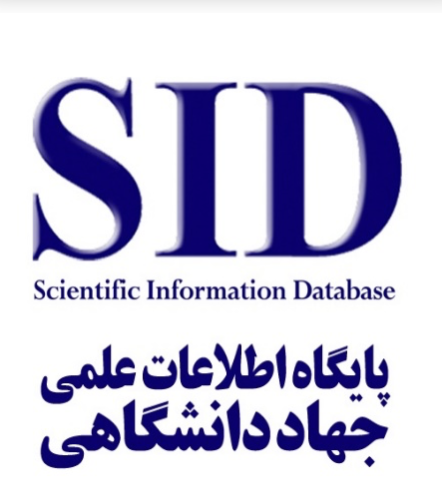Imbalance in Banks and its Impact on the Financing of Economic Enterprises
Keywords:
Banking imbalance, business financing, digital banking, administratively set interest rates, banking reformsAbstract
Imbalances in Iran’s banking system—especially in recent years—have become a critical issue in the process of financing economic enterprises. Banking imbalance refers to the disequilibrium between banks’ resources and expenditures, extreme volatility in deposits and customer withdrawals, administratively fixed interest rates, and capital shortages in banks. These factors result in serious constraints on banks’ lending capacity and lead to increased financing costs for businesses. The aim of this article is to analyze the effects of banking imbalances on business financing and to identify effective strategies for addressing these challenges. To achieve this objective, a descriptive-analytical method has been employed. The study examines the current condition of Iran’s banking system and analyzes the impact of these imbalances on the economic performance of enterprises. Moreover, through scenario analysis, the outcomes of each proposed solution for improving the financing situation are assessed. The findings of this research indicate that banking imbalances not only increase the cost of financing but also reduce banks’ lending power, limit enterprises’ access to financial resources, and undermine the country’s economic capacities. In this regard, reforming Article 8 of the Law on Interest-Free Banking, selling off non-productive bank assets, strengthening the capital market, and privatizing quasi-state banks are among the key strategies that could reduce banking imbalances, improve banks' liquidity, and facilitate the financing process for businesses.
Downloads
References
Abdollahi Poor, M. S., Bet Shikan, & Mohammad Hashim. (2020). Solutions for financial restructuring of banks in Iran. Asset Management and Financial Supply, 8(4), 1–20. https://doi.org/10.22108/amf.2020.119436.1473 (In Persian)
Adrian, M. T., Abbas, N., Ramirez, M. S., & Dionis, G. F. (2024). The US banking sector since the March 2023 turmoil: Navigating the aftermath. International Monetary Fund. https://www.imf.org/en/Publications/WP
Angori, G., Aristei, D., & Gallo, M. (2019). Determinants of banks’ net interest margin: Evidence from the Euro area during the crisis and post-crisis period. Sustainability, 11(14), Article 3785. https://doi.org/10.3390/su11143785
Bu, Y. (2019). Research on the impact of financing liquidity on risk-taking of commercial banks. In MATEC Web of Conferences (Vol. 267, p. 04012). EDP Sciences. https://doi.org/10.1051/matecconf/201926704012
Cooray, A., & Schneider, F. (2018). Does corruption throw sand into or grease the wheels of financial sector development? Public Choice, 177, 111–133. https://doi.org/10.1007/s11127-018-0530-0
Ebadi, M. H., & Pourzereshki, M. H. (2023). Developments in the monetary and banking system in 2021. Majlis Research Center, Economic Studies Office. (In Persian)
Fouejieu, A., Ndoye, A., & Sydorenko, T. (2020). Unlocking access to finance for SMEs: A cross-country analysis. International Monetary Fund. https://doi.org/10.5089/9781513528195.001
Halim, N. A., & Saputra, M. P. A. (2022). Estimation of reserve funds for e-banking transactions using operational value-at-risks. International Journal of Global Operations Research, 3(1), 31–36. https://doi.org/10.47194/ijgor.v3i1.140
Haruna, W., Aremu, T. A., & Modupe, Y. A. (2022). Defending against cybersecurity threats to the payments and banking system. arXiv Preprint, arXiv:2212.12307. https://doi.org/10.48550/arXiv.2212.12307
Mayer, J. (2012). Global rebalancing: Effects on trade and employment. Journal of Asian Economics, 23(6), 627–642. https://doi.org/10.1016/j.asieco.2012.07.002
Rakhimov, S. A. (2020). Importance and problems of temporary deposits in commercial banks (on the example of commercial banks in the USA and Uzbekistan). Theoretical & Applied Science, (1), 271–276. https://doi.org/10.15863/TAS.2020.01.81.45
Roky, R., Abbott, M., Bashar, O., Ullah, A., & Algarni, F. (2020, December). Computational evaluation of profitability: A case of Australian banks. In 2020 Seventh International Conference on Social Networks Analysis, Management and Security (SNAMS) (pp. 1–8). IEEE. https://doi.org/10.1109/SNAMS52053.2020.9336540
Shahabi, V., Tahami Pour, S. R., Shahabi, A., & Amiri, M. (2024). Investigating the formation of the phenomenon of disharmony in Iranian banks and providing the solutions to deal with it. Applied Theories of Economics, 10(4), 173–204. (In Persian)
Xu, T., Hu, K., & Das, U. (2019). Bank profitability and financial stability. International Monetary Fund. https://doi.org/10.5089/9781484397005.001
Demirguc-Kunt, A., Klapper, L., Singer, D., Ansar, S., & Hess, J. (2018). The Global Findex Database 2017: Measuring financial inclusion and the fintech revolution. World Bank Publications.
Federal Reserve Board. (2013, April 17). Series of financial and economic discussions – April 17, 2013. https://www.federalreserve.gov/pubs/feds/2013/201311/index.html
Islamic Parliament Research Center of Iran. (2021). The hidden imbalance in Iran's banking network (2014–2017): An analysis of its nature and root causes. Economic Studies Department, Strategic Report. (In Persian)
National Actions to Help Professional Services Ensure Financial System Integrity. (2024, January 23). Open Government Partnership. https://www.opengovpartnership.org/documents/national-actions-to-help-professional-services-ensure-financial-system-integrity/
Principles for Sound Liquidity Risk Management and Supervision. (2018, January 16). Basel Committee on Banking Supervision, 143–146. https://doi.org/10.1002/9781119444497.app1
Downloads
Published
Submitted
Revised
Accepted
Issue
Section
License

This work is licensed under a Creative Commons Attribution-NonCommercial 4.0 International License.


